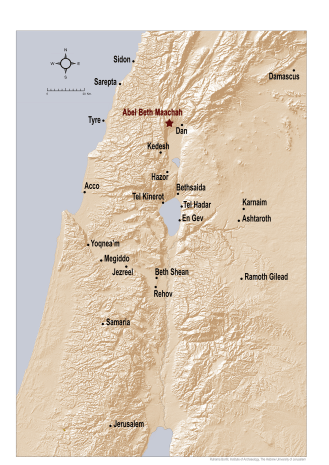Goliath’s Gath Has Been Found

The ancient city of Gath (modern Tell es-Safi) has been experiencing the archaeologist’s spade for the past 23 years under the direction of lead archaeologist Aren Maeir from Bar-Ilan University. This excavation has revealed much about the Philistines, the ancient people who lived there. Perhaps, most famously, a piece of pottery was discovered in the excavation that bears similarities with the name Goliath (see my article here and the photo below). Maeir recently stated, “One of the nice things about excavations at this site – and archaeology in general – is that every time you excavate, there are surprises.” One of those surprises, just recently announced, is the discovery of an older city of Gath laying below the one that has been excavated for the past 23 years. This older city dates to the 11th century B.C., the time of David and Goliath, and is even larger and more impressive than the one Maeir and his team have been excavating over the past, almost, quarter of a century!
Goliath’s Gath is Impressive!

The Jerusalem Post states, “While archaeologists have known for decades that Tell es-Safi contained the ruins of Goliath’s birthplace, the recent discovery beneath a pre-existing site reveals that his native city was a place of even greater architectural grandeur than the Gath of a century later” (for the full article click here). Digging beneath a previously explored area in Gath, this year (2019) the team discovered a large fortified structure with massive stones. Maeir states that the monumental architecture is larger than almost anything found in the Levant during this time period. As an example of the difference in size, Maeir compares the stones of the upper (later) period of the city (1.6 feet, or 1/2 meter long) with what he calls the “Goliath layer” recently discovered (3.2 – 6.5 feet, or between 1-2 meters). The walls of the older layer are also twice the width of the later walls (13 feet wide as opposed to 6.5 – 8 feet wide). The area covered by ancient Gath is also impressive. Maeir states that it covered about 123.5 acres, more than twice the size of comparable cities in the Levant. By comparison, the city of Jerusalem is estimated to have been about 10 acres in the time of David! For more details on the impressive size of Gath, see the excellent article in The Times of Israel.
Interpretation of the Find and Presuppositions

As we are all aware, all of us have certain presuppositions in our approach to anything in life. The same is true for archaeologists and biblical scholars. Maeir’s presuppositions differ from mine. He believes that much of the Bible was written at a later time period than the events that are described. Consequently he also believes that the Bible contains various myths, legends, and inaccuracies. As a result, he has suggested that the story of the gigantic size of Goliath (and others) may be related to the size of this ancient city and its walls. He thinks that ancient people would have reasoned that giant walls require giants to build them. Thus he does not believe the story of David and Goliath is literally true but derives from some such supposition.
Although Goliath may not be as tall as some think that he was (see my article here), I do respectfully disagree with Professor Maeir, since I hold to a strong view of the inspiration of Scripture. In my opinion, the power and sophistication of the Philistines and their great city of Gath, which has been revealed through archaeology, only confirms what the Bible has to say about them. They are pictured as a more technologically advanced society than the Israelites (e.g., 1 Sam. 13:19-22), as well as a dangerous and powerful foe. Many of the articles announcing this discovery are running with Professor Maeir’s theory. I for one, cannot agree. While we may not always be in agreement with the presuppositions and conclusions of others, we are certainly debtors to the men and women archaeologists who are uncovering the rich history of Israel’s past.
For other articles related to this recent discovery, see the following links:
This is the link to the Tell es-Safi site: gath.wordpress.com
Short article in Bible History Daily













